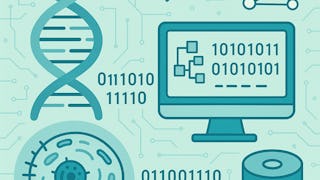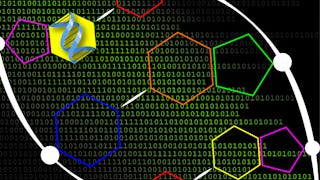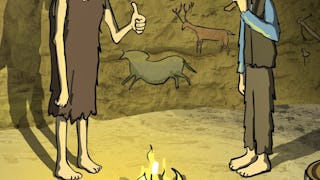This course distills for you expert knowledge and skills mastered by professionals in Health Big Data Science and Bioinformatics. You will learn exciting facts about the human body biology and chemistry, genetics, and medicine that will be intertwined with the science of Big Data and skills to harness the avalanche of data openly available at your fingertips and which we are just starting to make sense of. We’ll investigate the different steps required to master Big Data analytics on real datasets, including Next Generation Sequencing data, in a healthcare and biological context, from preparing data for analysis to completing the analysis, interpreting the results, visualizing them, and sharing the results.

Enjoy unlimited growth with a year of Coursera Plus for $199 (regularly $399). Save now.

(286 reviews)
Skills you'll gain
Details to know

Add to your LinkedIn profile
43 assignments
See how employees at top companies are mastering in-demand skills

There are 6 modules in this course
After this module, you will be able to 1. Locate and download files for data analysis involving genes and medicine. 2. Open files and preprocess data using R language. 3. Write R scripts to replace missing values, normalize data, discretize data, and sample data.
What's included
11 videos2 readings6 assignments1 discussion prompt
After this module, you will be able to: 1. Locate and download files for data analysis involving genes and medicine. 2. Open files and preprocess data using R language. 3. Write R scripts to replace missing values, normalize data, discretize data, and sample data.
What's included
13 videos4 readings8 assignments1 discussion prompt2 ungraded labs
After this module, you will be able to 1. Select features from highly dimensional datasets. 2. Evaluate the performance of feature selection methods. 3. Write R scripts to select features from datasets involving gene expressions.
What's included
9 videos4 readings6 assignments1 discussion prompt2 ungraded labs
After this module, you will be able to 1. Build classification and prediction models. 2. Evaluate the performance of classification and prediction methods. 3. Write R scripts to classify and predict diseases from gene expressions.
What's included
12 videos4 readings10 assignments1 discussion prompt1 ungraded lab
After this module, you will be able to 1. List different types of gene alterations. 2. Compare and contrast methods for detecting gene mutations. 3. Compare and contrast methods for detecting methylation. 4. Compare and contrast methods for detecting copy number variations. 5. Quantify genomic alterations. 6. Connect genomic alterations to differential expression of genes. 7. Write programs in R for determining gene alterations and their relationship with gene expression.
What's included
9 videos4 readings8 assignments1 discussion prompt1 ungraded lab
After this module, you will be able to 1. Find clusters in biomedical data involving genes.2. Analyze and visualize biological pathways. 3. Write R scripts for clustering and for pathway analysis.
What's included
12 videos5 readings5 assignments1 discussion prompt1 ungraded lab
Instructor

Offered by
Explore more from Health Informatics
 Status: Preview
Status: PreviewBirla Institute of Technology & Science, Pilani
 Status: Preview
Status: PreviewUniversity of Geneva
 Status: Free Trial
Status: Free TrialJohns Hopkins University
 Status: Free Trial
Status: Free TrialUniversity of California San Diego
Why people choose Coursera for their career




Learner reviews
286 reviews
- 5 stars
55.55%
- 4 stars
27.77%
- 3 stars
8.33%
- 2 stars
2.77%
- 1 star
5.55%
Showing 3 of 286
Reviewed on Aug 31, 2020
A very interesting basis for a start in big data with some particularly enjoyable practical exercises.
Reviewed on Feb 16, 2023
I learned a lot, all thanks to SUNY and coursera for gradually making my dream a reality.
Reviewed on Jul 2, 2022
it was a good and useful course. it just needs an update because of some changes in the cbioportal.
Frequently asked questions
To access the course materials, assignments and to earn a Certificate, you will need to purchase the Certificate experience when you enroll in a course. You can try a Free Trial instead, or apply for Financial Aid. The course may offer 'Full Course, No Certificate' instead. This option lets you see all course materials, submit required assessments, and get a final grade. This also means that you will not be able to purchase a Certificate experience.
When you purchase a Certificate you get access to all course materials, including graded assignments. Upon completing the course, your electronic Certificate will be added to your Accomplishments page - from there, you can print your Certificate or add it to your LinkedIn profile.
Yes. In select learning programs, you can apply for financial aid or a scholarship if you can’t afford the enrollment fee. If fin aid or scholarship is available for your learning program selection, you’ll find a link to apply on the description page.
More questions
Financial aid available,





